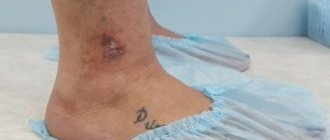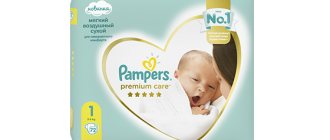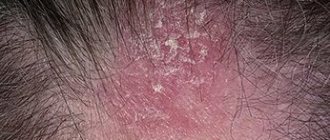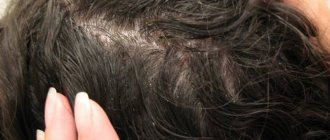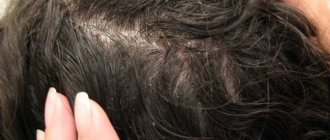Causes of venous dermatitis
Varicose eczema is usually caused by increased pressure in the veins of the legs. When the small valves inside the veins stop working, the upward movement of blood against gravity becomes difficult and it leaks back. Because of this, the pressure in the vessels increases, and this leads to the fact that the liquid part of the blood passes through the vascular wall and permeates the surrounding tissues. It is assumed that varicose eczema develops as a result of the immune system's reaction to this fluid.
Venous dermatitis affects people with varicose veins and is a sign that the veins in the lower extremities are not working properly. But in some patients, this condition occurs for no obvious reason. Research shows that 22% of patients with gravitational eczema do not have concomitant varicose veins.
Factors that increase the likelihood of this disease include:
- Gender, varicose dermatitis is more common in women;
- Obesity, which causes increased pressure in the leg veins;
- Pregnancy also increases venous pressure and makes the vascular wall more loose, pliable and permeable to fluid;
- Situations when you have to remain motionless for a long time, which leads to impaired blood circulation;
- Previous deep vein thrombosis is a condition in which blood clots called thrombi form in the veins of the legs. These blood clots damage the valves, which causes the veins to no longer cope with their function:
- Elderly age. As people age, they generally move less, which creates favorable conditions for microcirculation disorders and venous problems.
- Taking certain medications. Thus, drugs that are prescribed for hypertension, such as nifedipine, amlodipine and others with a similar effect, promote swelling and can provoke gravitational dermatitis.
Causes of dry dermatitis
Dry dermatitis, as doctors suggest, is based on a defect in the functioning of the immune system, which is inherited, from parents to children. Because of these features, the skin is much less protected than that of healthy people. The protective layer of fat on the surface becomes thinner, moisture easily evaporates, damage to the epithelium develops, which, together with the inflammatory reaction, gives symptoms of dry dermatitis. This disease can begin at any age, but most often starts in infancy and progresses with some improvement as one gets older. More than half of children with atopy “outgrow” this condition by school age, but exacerbations can, under certain conditions, occur throughout their lives.
Many different provoking factors have been identified, which for some patients play a large role in the formation of symptoms, while for others they do not in any way affect the course of the disease.
- Some products can provoke exacerbations of dry dermatitis. These include cow's milk, chicken eggs, nuts, especially peanuts, soybeans and wheat. Unfortunately, if symptoms have already appeared, simply removing the allergenic product from the diet will not help cope with the exacerbation.
- Dry skin dermatitis can be caused by contact with harsh detergents, which most often appears on the hands; the symptoms can be seen in the photo. Soap washes away the lipid layer from the surface of the epithelium, which normally protects it from water evaporation.
- Dry air also provokes dermatitis, as it promotes evaporation, causing the skin to lose moisture. Damages form on the overdried and inflamed surface of the skin, and dermatitis develops. This often happens in winter when the batteries are running.
- Cold air is also an important risk factor. Firstly, at low temperatures the relative humidity of the air decreases, which promotes evaporation. Secondly, cold and frost, as well as temperature changes, themselves irritate delicate skin, destroy the protective functions of sebum, cause damage and inflammation. In winter, during the cold season, dry dermatitis often develops on the face, head, arms and legs - those areas of the body that are in more contact with the environment (see photo), and its treatment should consist of restoring the barrier role of the skin and protecting it from aggressive temperature. The condition is further aggravated by the fact that heating devices are actively operating in the premises, which contributes to even greater loss of fluid.
- Mechanical irritation of the skin contributes to the development of dry eczema. The reason may be tight cuffs and collar, uncut labels, rough seams that rub and damage the skin surface. The quality of the fabric itself is also important. Thus, itchy woolen items can cause severe aggravation of dermatitis, and synthetic fabrics have both an irritating and allergenic effect.
- If eczema in children does not always take the form of dry dermatitis, then with age the skin’s ability to produce sebum decreases, the function of the sebaceous glands is insufficient, and asteatosis develops. Therefore, the tendency to dry dermatitis increases significantly in older people.
Symptoms of venous dermatitis
As with other types of eczema, with varicose dermatitis the following changes are characteristic of the skin:
- Itching may be the first symptom; it appears unnoticed and gradually progresses, becoming more pronounced at night. Sometimes it is more pronounced on one of the lower extremities.
- Swelling, which is less in the morning, but intensifies in the evening.
- Dryness and flaking;
- Transparent discharge that dries out in the form of crusts. If an infection occurs, the liquid becomes cloudy, purulent, and the drying crusts turn yellow.
These changes primarily affect the inner surface of the ankle, and as the disease progresses, they spread to the foot and lower leg.
On lighter skin, the affected areas appear light brown or pink. In dark-skinned people, the lesion takes on a dark brown or grayish tint and can be difficult to notice. The disease occurs with periods of exacerbation, when symptoms intensify, and remission, when they disappear.
Feet often swell, especially at the end of the day or after periods of standing for a long time. Swelling most often occurs on the lower leg. Varicose veins may also be visible in the form of bluish tubercles and nodules, and spider veins are also characteristic.
Some people also experience these symptoms:
- Change in skin color, which becomes darker, brown, grayish, with a purple tint. This manifestation may appear before all other symptoms.
- The affected surface becomes sensitive and painful when touched.
- When saturated with liquid, the dermis thickens and becomes rougher to the touch; this condition is called lipodermatosclerosis.
- Areas of skin thinning (atrophy) appear that look like thin, whitish scars.
- Pain in the area affected by varicose eczema.
- Plaques and nodules of a purple hue on the legs and tops of the feet, in the place of which painful ulcers form.
- Venous dermatitis is often accompanied by other types of eczema, such as atopic or dyshidrotic.
If varicose eczema is not treated, a trophic ulcer may form on the lower leg. This is a wound that appears in the area of greatest damage to the skin, does not heal on its own, is prone to suppuration and is very difficult to treat. This is facilitated by poor blood supply to tissues compressed by edema.
Cellulite is another complication that develops if treatment is delayed. This is an inflammation of the subcutaneous tissue, which is accompanied by severe swelling, redness, pain, fever and discharge of pus. It occurs when pyogenic bacteria penetrate through damaged skin, and local disruption of microcirculation and decreased immunity contribute to the formation of an infectious focus.
Symptoms of dry dermatitis
- The main symptom of this condition is severe skin itching, which can precede any skin changes. Itching significantly affects the overall quality of life, can disrupt sleep, cause constant crying in young children, and can even cause developmental delays.
- Severe dry skin is a mandatory sign of dry dermatitis. At the initial stages, the patient feels tightness and discomfort, then the condition worsens, the epithelium begins to redden and peel, which, together with itching, leads to damage and the formation of microcracks, abrasions, and scratches.
- Gradually, areas are formed that are affected by a chronic, sluggish inflammatory process, which goes through stages of some decrease and increase in symptoms. The skin gradually changes color from red to grayish or slightly purple, and also becomes noticeably thicker. Wrinkling and leathery sheen may be evident. Deep cracks may appear, in which case the affected area becomes sore and sensitive, and infection may occur.
- Signs of infection include exacerbation of all symptoms of inflammation. Swelling appears, redness increases, the skin becomes tense and hot to the touch. There is severe pain. Suppuration may develop, then yellowish cloudy discharge appears, which dries on the surface of the epithelium, forming crusts.
- In infants, the cheeks, neck, and skin folds are most often affected. In older children and adult patients, the favorite localization of the pathological process is the elbows, knees, wrists and dorsums of the hands. The elderly are characterized by widespread rashes that occupy all surfaces of the arms and legs, and are especially pronounced on the ankles. Parts of the body exposed to contact with the environment, namely the face and hands, are affected.
Treatment of venous dermatitis
In case of dermatitis associated with vein pathology, it is necessary to consult a doctor as soon as possible. If treatment is not started on time, dangerous complications can develop that can be very difficult to cope with.
All therapy is divided into drug treatment and a number of non-drug measures aimed at alleviating the condition and reducing symptoms.
- For venous dermatitis, soaps and bubble baths are contraindicated, as they dry out the skin and irritate areas of the body affected by eczema. Regular moisturizing lotion can be used as a substitute for soap by applying to damp skin and then rinsing off.
- When using a shower or bath for personal hygiene, the water should be lukewarm, or even cool. Hot water causes severe loss of moisture and worsens the itching.
- Contact with water should be short. Water washes away the fatty protective layer, and moisture freely evaporates from the skin. You should not take a bath longer than 10 - 15 minutes.
- Products containing alcohol, dyes and fragrances are dangerous for eczema skin. They can cause irritation and allergies, and worsen the symptoms of dermatitis.
Treatment with medications
- Emollients, or medicated moisturizers, help keep skin hydrated and elastic and prevent damage and cracking. This is one of the most important groups of drugs in the treatment of all types of eczema. Use the product on your legs and feet twice a day, or more often if your skin is very dry. Apply it with light movements, in enough quantity to make the skin look slightly shiny.
- Glucocorticosteroids are medications based on adrenal hormones. They have an anti-inflammatory effect. Entering the subcutaneous tissue, glucocorticoids inhibit immune cells and prevent them from releasing inflammatory mediators - chemicals responsible for the symptoms of eczema. In the treatment of venous dermatitis, these drugs should be used with caution, since tissue swelling and increased vascular permeability in the area of the pathological process lead to the fact that the drug is absorbed in large quantities and enters the bloodstream. Side effects can be quite serious: decreased immunity, obesity, increased blood pressure and blood sugar levels, suppression of the adrenal glands. Therefore, moderate or weak glucocorticoids are used according to their potency, and they are prescribed for a short course. Hydrocortisone and prednisolone ointments are suitable.
- Non-steroidal anti-inflammatory ointments regulate immunity and suppress inflammation, while they do not contain hormones and are free of their side effects. These drugs include Elidel cream; it is well suited for targeted therapy of varicose veins dermatitis.
- Zinc oxide is used in this disease due to its drying effect. Due to swelling, eczema against the background of varicose veins often becomes wet, and clear discharge oozes from the lesions on the skin. Zinc oxide reduces itching, softens and alleviates general discomfort.
- Antimicrobial agents become relevant if an infection occurs. In conditions of impaired microcirculation, edema and damage to the epithelium, bacteria inhabiting the surface of the body easily penetrate inside, into the subcutaneous tissue, and cause inflammation. In this situation, antibiotics must be taken in tablet form, and antiseptic solutions must be used topically. The doctor selects a suitable drug, usually a broad-spectrum antibiotic from the group of penicillins, cephalosporins or macrolides.
Symptoms of infectious dermatitis
Manifestations of skin disease directly depend on the underlying pathology, including:
- diabetes;
- decreased immunity;
- regular stress;
- chicken pox;
- measles;
- atopic dermatitis suffered in childhood.
Infectious dermatitis is characterized by skin rashes, itching, peeling, redness, and swelling. In some diseases, it is accompanied by elevated body temperature, fever and fever.
These symptoms are provoked by household chemicals, uncomfortable tight shoes made of artificial materials, food, and medications. At risk are children, elderly people, smokers and alcohol addicts, as well as those who suffer from allergic diseases, diseases of the gastrointestinal tract, nervous system and respiratory organs.
Prevention of venous dermatitis
- Physical activity is beneficial. Aerobic exercises without jumping, walking at a fast pace, cycling, elliptical trainer, skiing improve microcirculation in the legs. Swimming has a powerful anti-edematous effect. At the same time, running, jumping, intense interval training and especially weight training increase impact load and increase intra-abdominal pressure. These sports should not be practiced by people prone to varicose veins.
- While resting, it is good to keep your legs elevated to help the veins carry blood to the heart and relieve swelling.
- Avoid standing still for long periods of time. If you have to stand for a long time without moving, taking steps in place, alternately bending your knees and hips and bending over will help the veins conduct blood.
- A contrast shower on the legs and feet should become a daily morning routine for people with problem veins. Alternate dousing with cold and hot water gives tone to the vascular wall and increases blood flow.
- Compression stockings are specially designed medical products that apply intense compression to the foot and ankle and become looser further up the leg, which promotes good circulation and helps blood move upward against gravity. They are put on in the morning, being in a horizontal position. Depending on the stage of the disease, stockings, knee socks and tights are produced with varying degrees of compression. Your doctor will help you choose the right compression stockings.
- Losing weight significantly reduces the likelihood of disease. Physical activity should be combined with proper nutrition.
The danger of self-medication
You can get rid of skin infections on your legs forever only with the help of professional and modern treatment. There are the following reasons for this:
- It is impossible to independently determine the type of dermatitis and its root cause.
- Traditional recipes can aggravate the situation. They should be used only after consultation with a specialist and in combination with drug therapy.
- It is important not to confuse infectious dermatitis with psoriasis or lichen. Therapeutic regimens for these diseases are different.
- In most cases, consultation with several specialists is required: a dermatologist, gynecologist, infectious disease specialist, and therapist.
- Poor quality therapy often leads to relapses of the disease, scars and spots on the skin.
It is important to follow the rules of hygiene, lead a healthy lifestyle, and at the first symptoms of infectious dermatitis on the legs, contact the specialists of our center.


